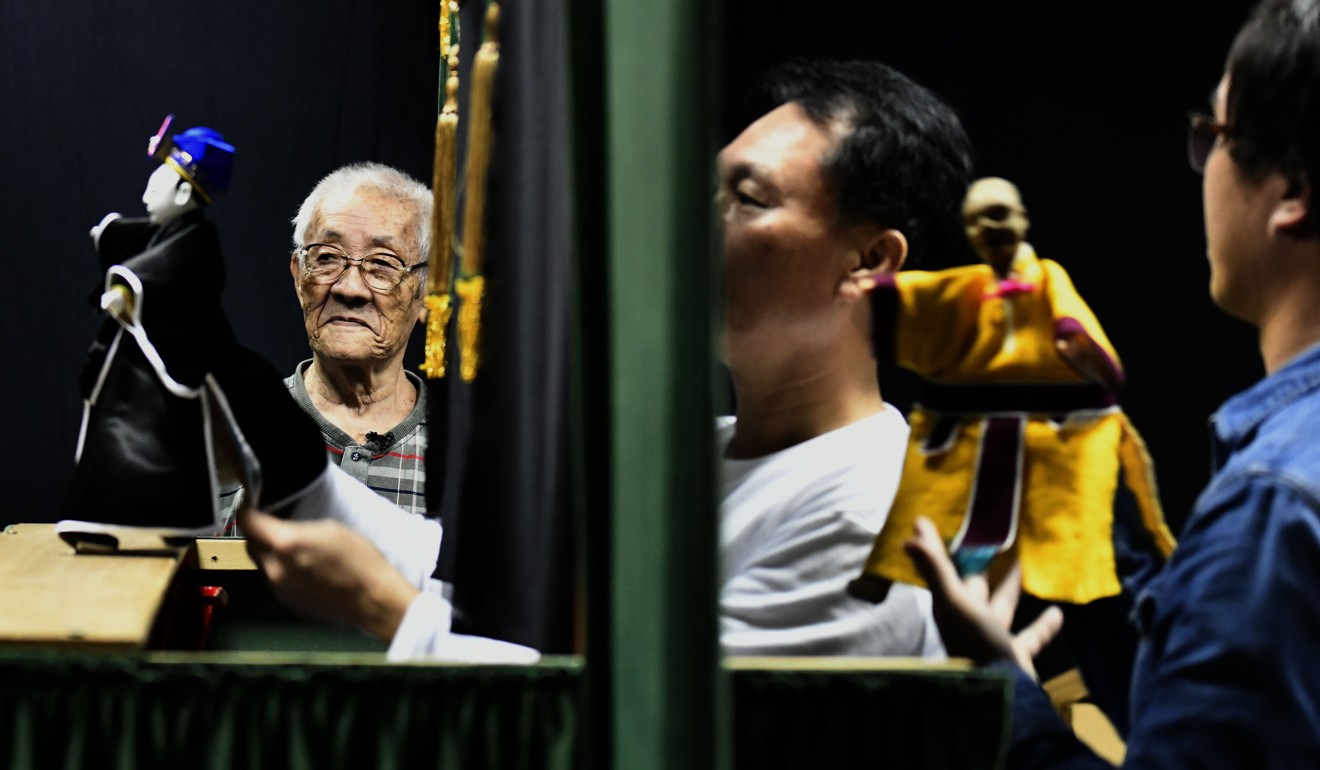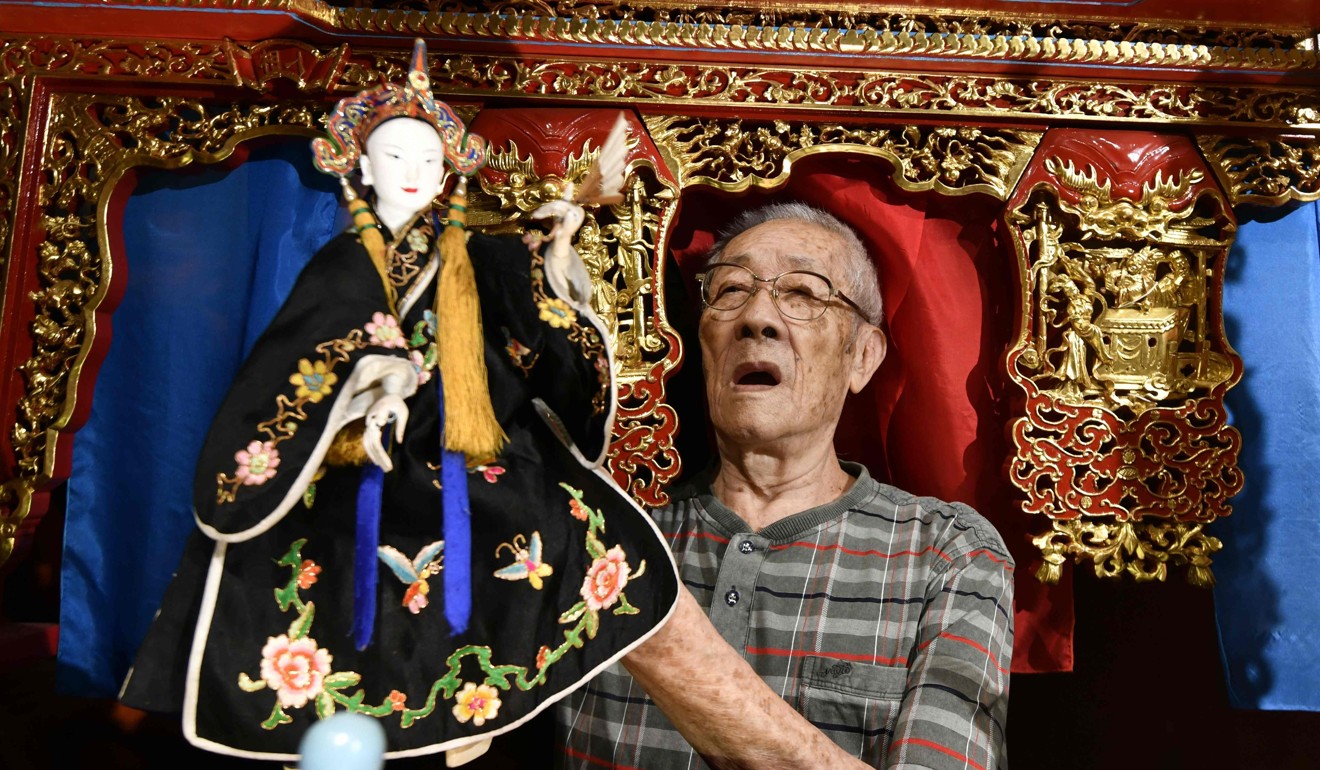
Taiwanese glove puppeteer’s fight to save dying art makes film star of Budaixi master
- Filmmaker spent 10 years with Chen Hsi-huang as he took craft to new generation
- The 87-year old inspired by pupils who think his art is ‘awesome’
Taiwanese glove puppeteer Chen Hsi-huang’s determination to revive the ailing traditional craft has made him the star of new film that took 10 years to make and turned the media spotlight on his late-life renaissance as a champion of the art form.
The film, titled Father, tells the story of how Chen, now 87, pursued the craft in the footsteps of his father – legendary puppeteer Li Tian-lu, who drew huge audiences to his shows in the 1950-1970s and appeared in several films.
Known as Budaixi, glove puppetry arrived in Taiwan in the 19th century from the southeastern mainland Chinese province of Fujian and was typically performed at religious and festive occasions, becoming a popular form of entertainment.
Puppeteers move small glove dolls on ornate wooden stages to tell historical and martial arts tales accompanied by live folk music.
Hong Kong master puppeteer who’s spent his life perfecting a dying art
Chen said he values traditional puppetry because it is characterised by subtle movements, with the puppeteer taking on all roles, from a young woman to an old man.
He first set up a troupe when he was 23, but business declined and he shut up shop 17 years later. He decided to teach the craft and continued to perform with other groups in Taiwan and overseas.

At the age of 79, motivated by his desire to preserve Budaixi, he set up a new troupe and teaches puppetry at weekend classes and trains apprentices.
“There were only two or three traditional troupes left,” he said. “I used my name to open a new troupe because I did not want the traditional craft to disappear.”
Chen acknowledged the challenges facing the craft and its practitioners and said people had less time to spare to watch the shows.
But he has taken heart from the positive response to the documentary which made its premiere in Taiwan last month, directed by local filmmaker Yang Li-chou over a period of 10 years.
“I was worried that people might not understand the film, but young people did, even if they hadn’t watched Budaixi before. They told me they liked it and that puppetry is awesome,” Chen said.

Chen Wei-you, Chen’s current apprentice, is part of a family troupe that runs about 150 puppet shows a year.
“My grandfather actually told me to find a better job but I chose this career because I am interested,” the 32-year-old said.
“Like the master, I don’t want the traditional puppetry to disappear.”
Dozens of students of all ages attend Chen’s classes at the government-funded Puppetry Art Centre in Taipei each Saturday.
Student Hung Wei-heng, 10, said he was interested in learning puppetry because it was “very cool”.
“I want to learn how to operate the puppets and to make the movements,” he said.
Taiwanese authorities are trying to promote the traditional craft, organising an annual puppet festival in western Yunlin county.

Puppet fan Chiang Chi-feng, 41, attended the festival last month with a sense of nostalgia.
“Now that I have kids of my own, I bring them to temple fairs and watch outdoor puppet shows. They are experiencing what I experienced in my childhood,” he said.
Puppet master Chen is determined to perform and teach as long as he has strength.
“I haven’t completed passing on the art so I cannot retire,” he said.

.png?itok=arIb17P0)